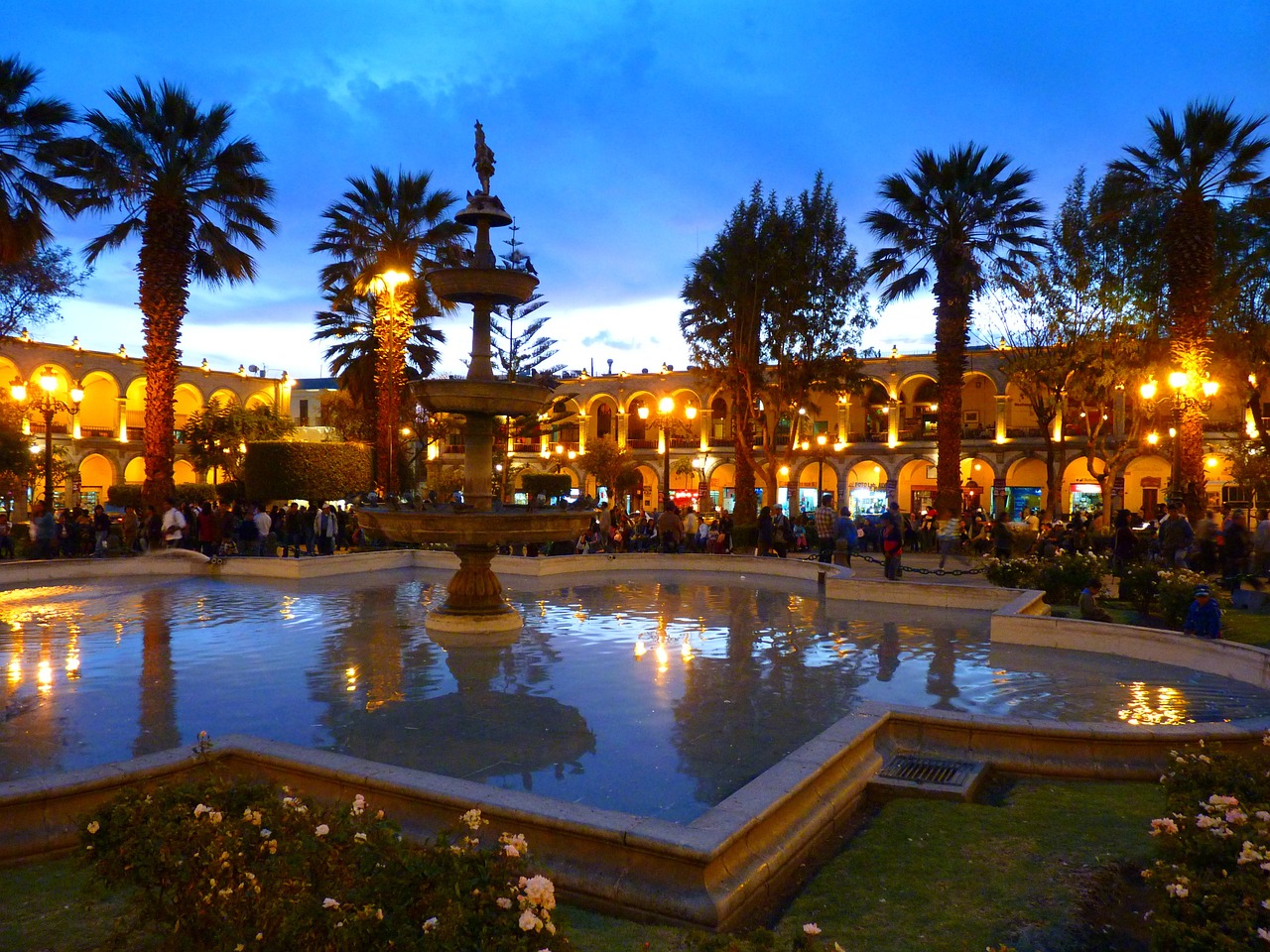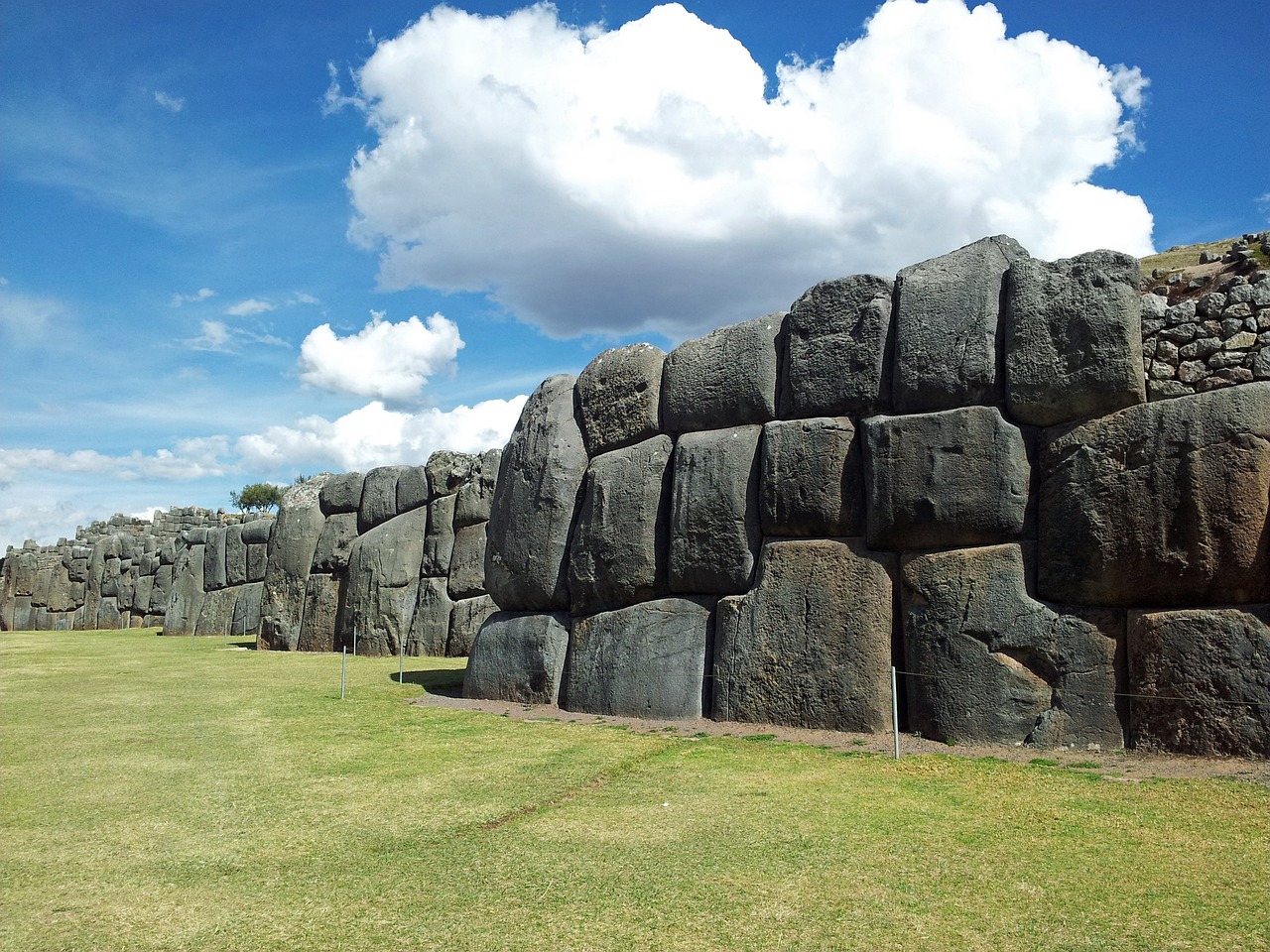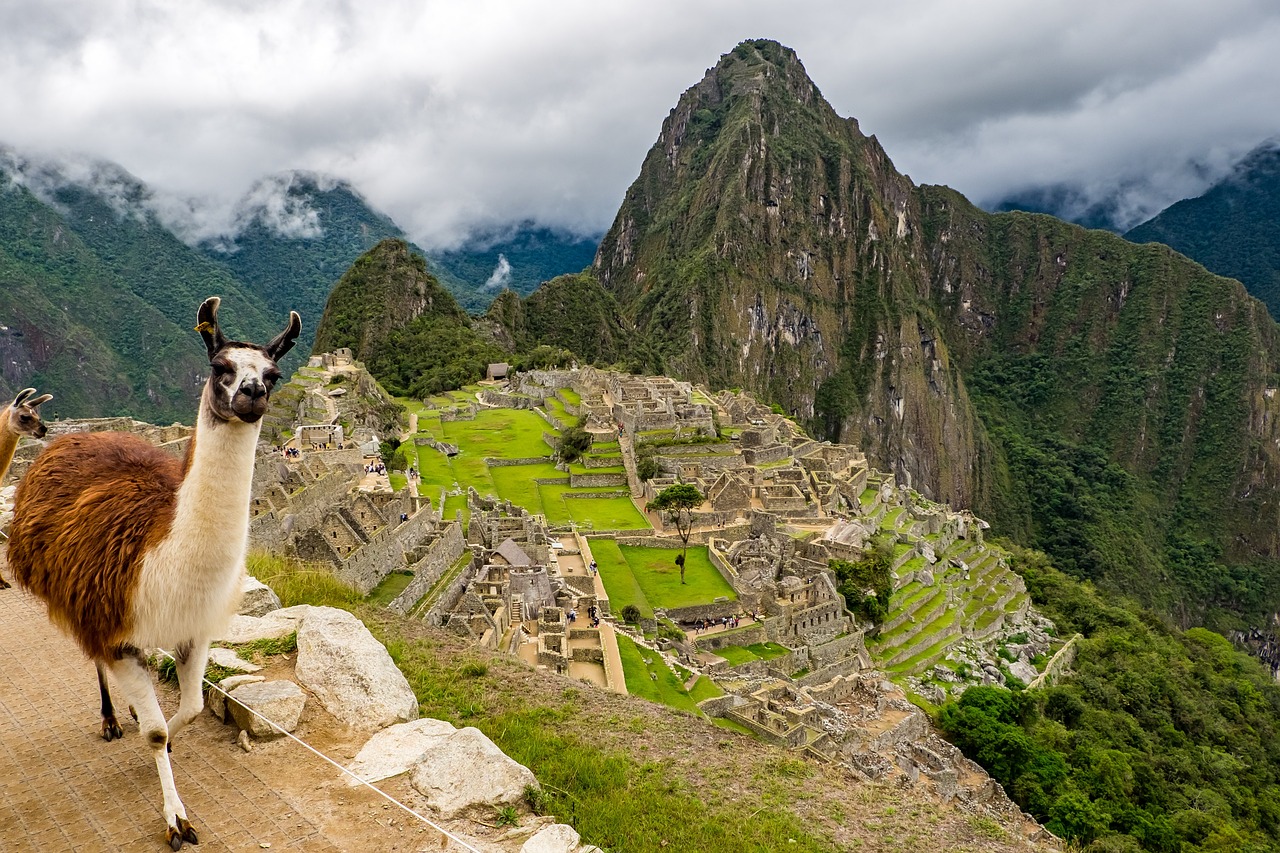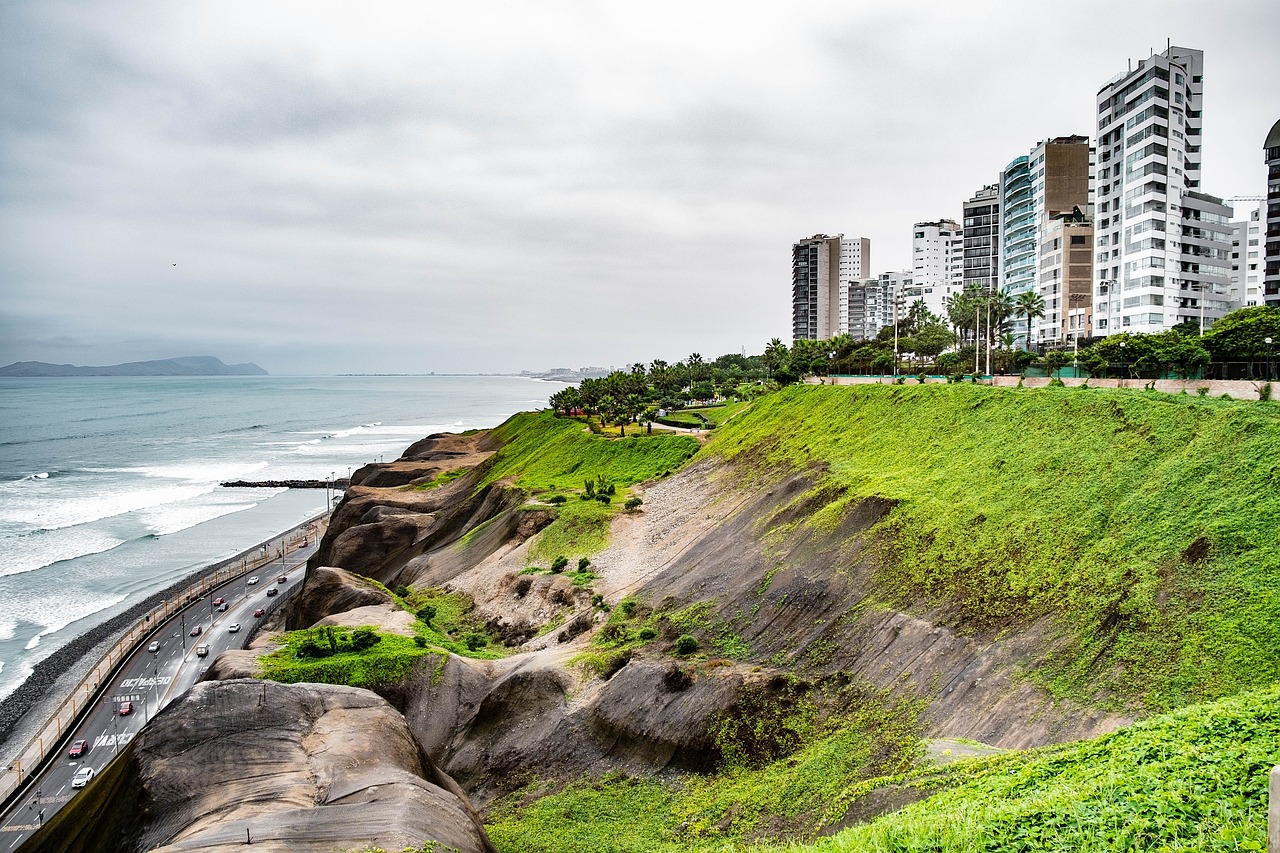Arequipa is a city located in southern Peru, about 1,000 kilometers southeast of the capital city of Lima. It is the capital of the Arequipa Region and is situated at an altitude of 2,328 meters above sea level. Arequipa is known for its stunning architecture, including many buildings made of white volcanic stone, and is surrounded by towering mountains and valleys. It is also home to several important historical and cultural sites, as well as a thriving culinary scene.
Short History
Arequipa has a rich and diverse history that dates back to pre-Columbian times. The area was originally inhabited by the indigenous people of the Collagua and Cabana cultures. In the 15th century, the Inca Empire conquered the region, and the city of Arequipa was founded by the Spanish conquistadors in 1540.
Throughout the colonial period, Arequipa grew and prospered, becoming an important center of trade and commerce. However, it was also a site of political and social unrest, with frequent uprisings against Spanish rule.
In the early 19th century, Arequipa played a key role in Peru’s struggle for independence from Spain. It was here that the first flag of independent Peru was raised in 1820. The city continued to experience periods of economic and political instability throughout the 20th century, but also saw significant growth and development.
Today, Arequipa is one of Peru’s largest and most important cities, with a rich cultural heritage and a thriving tourism industry. Its historic center was declared a UNESCO World Heritage site in 2000, and it continues to be a hub of commerce, industry, and culture in southern Peru.
Architecture
The architecture of Arequipa is particularly notable for its use of sillar, a white volcanic stone that is abundant in the region. Many of the city’s most iconic buildings, including the Cathedral of Arequipa and the Church of the Society of Jesus, were constructed using this material. The historic center of Arequipa is also known for its distinctive colonial-era buildings, which feature ornate facades and intricate carvings.
One of the most striking examples of Arequipa’s architecture is the Monastery of Santa Catalina, a sprawling complex of buildings and courtyards that dates back to the 16th century. The monastery’s colorful walls and intricate architecture are a testament to the skill and creativity of the artisans who built it.
Another notable example of Arequipa’s architecture is the Casa del Moral, a historic mansion that now serves as a museum. The building features an elaborate Baroque facade and a collection of period furniture and artwork.
Overall, the architecture of Arequipa reflects the city’s unique blend of indigenous and colonial influences, and is a testament to the region’s rich cultural heritage.
Museums and Galleries
Arequipa is home to a diverse range of museums and galleries that offer something for everyone, whether you’re interested in history, art, or literature. Some examples:
- Santa Teresa Museum: Located within the Santa Teresa Convent, this museum offers a fascinating glimpse into the lives of the Carmelite nuns who lived there. Visitors can see the nuns’ living quarters, as well as a collection of artwork and religious artifacts.
- Museo de Arte Contemporáneo: This museum showcases contemporary art from around Peru and the world, with a focus on emerging artists. It hosts a range of exhibitions and events throughout the year, and is a great place to discover new and exciting art.
- Casa del Moral: This historic mansion now serves as a museum of colonial art and furniture. It features a beautiful courtyard, ornate stonework, and a collection of period furniture and artwork.
- Museo Santuarios Andinos: This museum is dedicated to the discovery and study of the mummified remains of Inca sacrificial victims, including the famous “Ice Maiden.” Visitors can learn about the Inca culture and the rituals surrounding these sacrifices.
- Museo de la Catedral: Housed within the Cathedral of Arequipa, this museum features a collection of religious art and artifacts, including paintings, sculptures, and liturgical objects. Visitors can also climb to the top of the cathedral tower for stunning views of the city.
- Mario Vargas Llosa House-Museum: This museum is dedicated to the life and work of the Nobel Prize-winning Peruvian author Mario Vargas Llosa. It features a collection of his personal belongings, as well as exhibits on his literary career and political activism.
Landmarks and Monuments
Arequipa is a city with a rich history and cultural heritage, and is home to many fascinating landmarks and monuments that offer a glimpse into its past and present. Here are some worth visiting:
- Santa Catalina Monastery: One of Arequipa’s most iconic landmarks, the Santa Catalina Monastery is a sprawling complex of buildings and courtyards that dates back to the 16th century. It features colorful walls, intricate architecture, and a fascinating history.
- Plaza de Armas: The central square of Arequipa, the Plaza de Armas is surrounded by some of the city’s most important buildings, including the Cathedral of Arequipa and the Palacio de Gobierno.
- Cathedral of Arequipa: This stunning cathedral was constructed over a period of more than 200 years, beginning in the 16th century. It features a striking Baroque facade, ornate altars, and a collection of religious art and artifacts.
- Yanahuara Church and Mirador: Located in the neighborhood of Yanahuara, this 18th-century church is known for its beautiful arches and ornate facade. The nearby Mirador offers stunning views of the city and the surrounding mountains.
- Molino de Sabandia: This historic mill, located just outside of Arequipa, is a popular tourist attraction. Visitors can see the mill’s machinery in action, and learn about the history of flour production in the region.
- Chachani Volcano: For those who enjoy outdoor adventure, the Chachani Volcano is a popular destination for hiking and trekking. The mountain offers stunning views of the surrounding landscape, and is a challenging but rewarding climb.
Parks and Green Spaces
Arequipa offers a variety of parks and green spaces for visitors to enjoy, each with its own unique attractions and natural beauty. Whether you’re looking for a peaceful spot to relax or an opportunity for outdoor adventure, there is something for everyone in Arequipa’s parks and natural areas. For example:
- Selva Alegre Park: This is one of the largest and most popular parks in Arequipa, covering an area of over 70 hectares. It features a lake, a small zoo, and a variety of recreational facilities, including playgrounds, sports fields, and picnic areas.
- Yanahuara Park: Located in the Yanahuara neighborhood, this park is known for its beautiful gardens and panoramic views of the city and surrounding mountains. It is a popular spot for picnics and strolling.
- Carmen Alto viewpoint: This scenic viewpoint overlooks the Chili River valley and offers stunning views of the countryside surrounding Arequipa. There are hiking trails in the area, and visitors can also enjoy a picnic or horseback ride.
- Paucarpata Ecological Reserve: Located on the outskirts of the city, this nature reserve offers a variety of outdoor activities, including hiking, bird watching, and camping. It is home to a number of rare and endangered plant and animal species.
- La Noria waterfall: This beautiful waterfall is located in the hills outside of Arequipa, and is a popular spot for hiking and picnicking. Visitors can also swim in the natural pool at the base of the falls.
- Sabandia Park: This small park is located near the Sabandia Mill and offers a peaceful spot for walking and enjoying nature. It features a small stream, gardens, and a variety of trees and flowers.
Shopping Districts
Arequipa offers a variety of shopping options, from traditional markets to modern shopping centers. Visitors can find a mix of local and international brands, as well as traditional crafts and products. Some shopping places are listed below:
- Mercado San Camilo: This historic market is located in the heart of Arequipa and is known for its wide variety of local produce, including fruits, vegetables, meats, and cheeses. It is also a great place to find traditional Peruvian crafts, such as alpaca wool textiles and ceramics.
- Calle San Francisco: This street is lined with shops and restaurants, and is a popular spot for locals and tourists alike. It offers a mix of traditional and modern stores, including boutiques, souvenir shops, and jewelry stores.
- Plaza Vea: This large chain store offers a wide range of products, including groceries, electronics, clothing, and household items. It is a convenient option for those looking to do some one-stop shopping.
- Mall Aventura Porongoche: This modern shopping mall is located on the outskirts of the city and offers a variety of stores, including international brands, department stores, and a cinema.
- C.C. Parque Lambramani: This shopping center offers a mix of stores, including clothing and shoe stores, electronics, home goods, and more. It also features a food court and entertainment options, such as a movie theater.
- Centro Comercial Real Plaza: Located near the airport, this shopping mall offers a mix of stores, including clothing, electronics, and home goods. It also features a food court and entertainment options, such as a bowling alley.
Food and Drink
Arequipa is known for its unique cuisine that combines traditional Peruvian flavors with Spanish and Andean influences. Here are some food and drink options to try in Arequipa:
- Rocoto Relleno: A spicy stuffed pepper dish that is a specialty of the region.
- Chupe de Camarones: A hearty shrimp soup with potatoes and vegetables.
- Adobo de Chancho: A slow-cooked pork dish marinated in garlic, vinegar, and other spices.
- Cuy Chactado: A roasted and flattened guinea pig, a traditional dish in the Andes.
- Queso Helado: A frozen dessert made with milk, cinnamon, and coconut.
- Chicha Morada: A refreshing drink made from purple corn, spices, and fruit.
- Pisco Sour: Peru’s national drink, made from pisco brandy, lime juice, sugar, egg white, and bitters.
- Inca Kola: A popular soda in Peru with a unique, sweet flavor.
Arequipa also has a variety of local markets and food stalls where you can try street food and snacks, such as empanadas, anticuchos (grilled skewers), and churros. Be sure to also try some of the local cheeses and meats, such as the spicy rocoto cheese or the cured alpaca meat.
Transportation
Arequipa, like many cities in Peru, has several transportation options for getting around. Here are some of the best ways to move around in Arequipa:
- Walking: Many of Arequipa’s attractions are located in the historic city center, which is easy to explore on foot. Walking is also a good way to take in the city’s colonial architecture and charming streets.
- Taxis: Taxis are readily available in Arequipa and can be a convenient way to get around the city. Be sure to negotiate the fare before getting into the taxi and make sure the taxi is registered and has a working meter.
- Public buses: Arequipa has a network of public buses that run throughout the city and can be a cheap way to get around. However, the buses can be crowded and may not be the most comfortable option.
- Tourist buses: If you’re interested in seeing the sights around Arequipa, there are several tourist bus companies that offer day trips and excursions to nearby attractions.
- Bicycle: Renting a bicycle can be a fun way to explore Arequipa and its surrounding areas. There are several rental shops in the city that offer a variety of bikes for different skill levels.
Overall, Arequipa is a relatively small city and most of its attractions are located within walking distance of each other, making it easy to get around on foot. However, if you need to travel longer distances or want to see more of the city, taxis and public transportation are also good options.
City Safety
Arequipa is generally considered a safe city for tourists. Like any city, it’s important to take precautions to ensure your safety, such as avoiding unlit areas at night, keeping your valuables out of sight, and being aware of your surroundings. Petty crime, such as pickpocketing and bag snatching, can occur in crowded areas, so it’s important to be vigilant in these situations. Additionally, it’s recommended to use official taxis or ride-sharing apps, as unofficial taxis may not be safe. Overall, if you take common-sense precautions, Arequipa is a safe city to visit.
Expensive or Cheap
Arequipa can be considered a moderately priced city for tourists. Prices for accommodations, food, and transportation can vary depending on the location and level of luxury. Generally, staying in the historic center of Arequipa can be more expensive than other areas of the city, but it can be worth it for the convenience and charm of the neighborhood. Food can be found at a range of prices, with street food and local markets being more affordable options. Restaurants and cafes can also vary in price, but can still be relatively inexpensive compared to other cities. Transportation costs, such as taxis and buses, are generally affordable. Overall, while there are some high-end options available, Arequipa can be an affordable city for budget-conscious travelers.
Best Time to Travel
The best time to travel to Arequipa largely depends on personal preferences and what you hope to experience during your visit. Here’s a breakdown of what to expect during each season:
- High season (June to August): This is the peak tourist season in Arequipa, with sunny days and mild temperatures. However, this is also the busiest time of year, and prices for accommodation and activities tend to be higher.
- Shoulder season (April to May and September to November): This is a good time to visit Arequipa if you want to avoid the crowds of high season but still enjoy relatively good weather. Temperatures are typically mild, and there may be occasional rain showers.
- Low season (December to March): This is the rainy season in Arequipa, with frequent rain showers and occasional thunderstorms. However, there are fewer tourists and prices tend to be lower.
Overall, the best time to travel to Arequipa largely depends on your personal preferences and what you hope to experience during your visit. If you want to enjoy sunny days and mild temperatures, high season is the best time to visit, but be prepared for crowds and higher prices. If you want to avoid the crowds and enjoy lower prices, low season may be a good option, but be prepared for rain and occasional thunderstorms.
Date Ideas
Arequipa is a romantic city with plenty of options for a memorable date. Here are some ideas:
- Explore the historic city center: Take a stroll through the historic center of Arequipa with your partner, visiting the charming colonial buildings, plazas, and churches. You can also stop at a cafe or restaurant to enjoy some local cuisine and people-watching.
- Visit the Santa Catalina Monastery: This impressive monastery is a must-visit attraction in Arequipa. Wander through the colorful streets and courtyards with your partner, admiring the beautiful architecture and learning about the history of the complex.
- Take a sunset walk along the Chili River: The Chili River runs through the heart of Arequipa, providing a scenic setting for a romantic walk. As the sun sets, the colors of the sky and the river make for a breathtaking view.
- Enjoy a traditional Peruvian dinner and show: Many restaurants in Arequipa offer traditional Peruvian dance and music shows along with delicious local cuisine. This is a great way to experience the culture of the city and enjoy a romantic evening with your partner.
- Take a day trip to Colca Canyon: If you have more time in Arequipa, consider taking a day trip to Colca Canyon, one of the deepest canyons in the world. You can hike, visit local villages, and enjoy the stunning views with your partner.
Fun and Interesting Facts
Here are some fun and interesting facts about Arequipa:
- Arequipa is known as the “White City” because of the many colonial-era buildings made from white volcanic stone.
- The city is located at an altitude of over 2,300 meters above sea level, making it one of the highest major cities in the world.
- Arequipa is home to one of the oldest universities in South America, the Universidad Nacional de San Agustin, founded in 1714.
- The city is surrounded by three volcanoes: Misti, Chachani, and Pichu Pichu. Misti is still considered active and is a popular hiking destination.
- Arequipa is famous for its cuisine, including dishes such as rocoto relleno (stuffed spicy peppers) and chupe de camarones (shrimp chowder).
- The historic center of Arequipa is a UNESCO World Heritage Site, recognized for its unique architecture and cultural significance.
- The Santa Catalina Monastery in Arequipa is one of the most popular tourist attractions in Peru, attracting thousands of visitors each year.
Conclusion
Arequipa is a fascinating city with a rich history, stunning natural surroundings, and unique cultural traditions. Its white stone architecture, delicious cuisine, and vibrant atmosphere make it a must-visit destination for travelers to Peru. Whether you’re interested in history, nature, or food, Arequipa has something to offer everyone.



